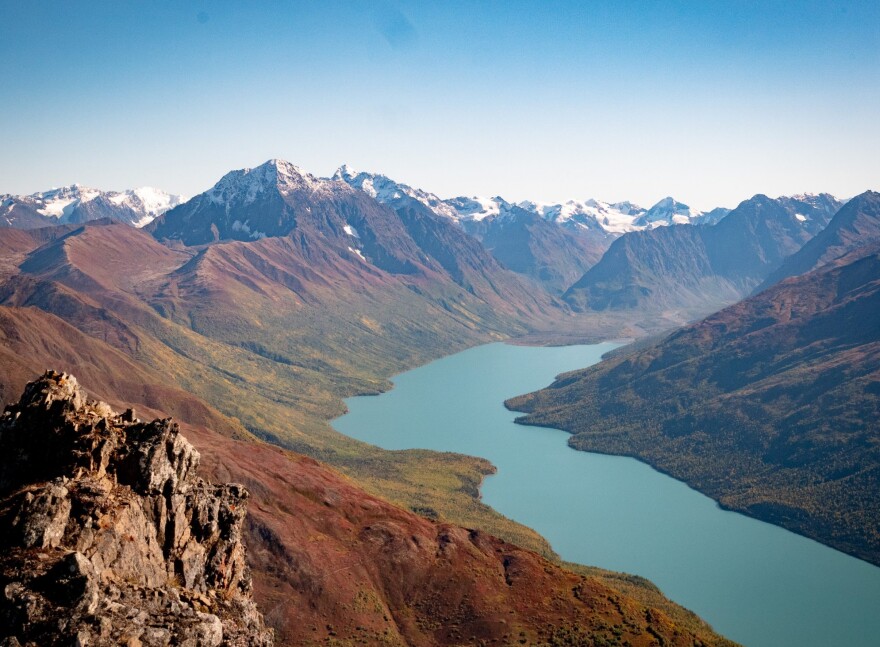Gov. Mike Dunleavy announced a pivotal decision on Wednesday that will affect the future of clean hydroelectric power generation, drinking water and fish habitat in the Anchorage area.
The governor’s decision sets up three scenarios. Residents should expect at least modest changes to partially restore Eklutna River, though there’s potential for something much more ambitious.
First, the default: A partial restoration of what’s now a mostly dry Eklutna River and some former salmon habitat in it. Some water that now goes to power generation would be diverted year-round to the surface of the Eklutna River. This plan leaves about a mile of the river near the old headwaters dry, so fish wouldn’t be able to reach the lake and its tributaries.
This default plan has been studied and vetted, and the electric utilities say it fairly balances competing interests while minimizing the impact on ratepayers and taxpayers.
The second scenario builds on the first. The parties have committed to spend up to $10 million to study and potentially build a new water gate at or near the dam that blocks the natural flow of water into Eklutna River. Then, when there’s excess water to go around, Eklutna Lake could be selectively reconnected with Eklutna River.
The third scenario is based off a concept known as pumped storage hydro, recently proposed by Mark Corsentino who is the city’s water utility boss and director of the city enterprise that holds a 53% stake in the Eklutna Hydroelectric Project. He claims it could satisfy all parties, and incentivize the development of more renewable energy. This idea has not been studied or vetted for Eklutna, but the governor just ordered that work be done with his decision.
Dunleavy and the electric utilities declined interviews for this story, but issued written statements.
The governor said the final plan balances the competing interests.
“The program is designed to be an iterative one that will be able to adapt to changing conditions and technologies well before the process is required to repeat itself,” Dunleavy said. “This is not the end of the process, and I am committed to seeing this final program successfully enacted.”
In a joint statement from Chugach Electric Association and Matanuska Electric Association, the utilities said they are still evaluating the decision, but are committed to working collaboratively on the project.
They called their proposal, which didn’t address the pumped storage hydro concept, “a significant milestone in balancing our communities’ needs for reliable, affordable and clean year-round energy with the enhancement of fish and wildlife habitat in the Eklutna River.”
Leading up to the decision, relations between the utilities and the elected officials for Anchorage and the Native Village of Eklutna had gotten prickly. Some of those officials suggested the utilities were negotiating in bad faith, and were considering lawsuits.
Anchorage Assembly Chair Chris Constant was one of the loudest critics of the utilities’ proposal. But his initial reaction to the governor’s decision was cautious optimism.
“I think the governor should be lauded for his thoughtful approach,” he said. “Because it’s clear he heard the Native village and the municipality’s voice in the conversation, and has challenged everybody to come up with a work plan.”
Whatever plan they settle on needs to be up and running by 2032.


